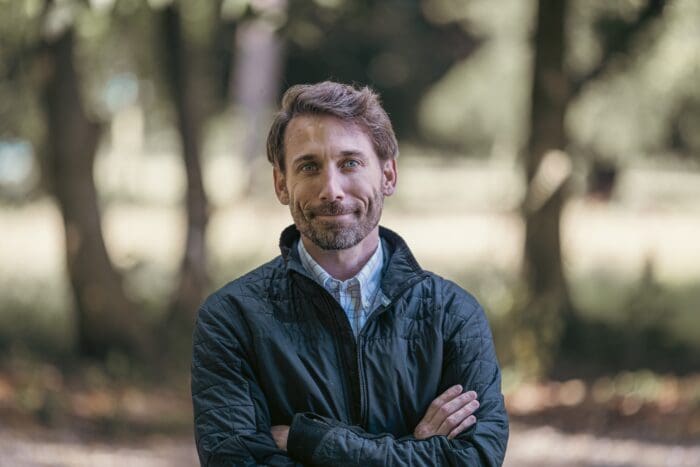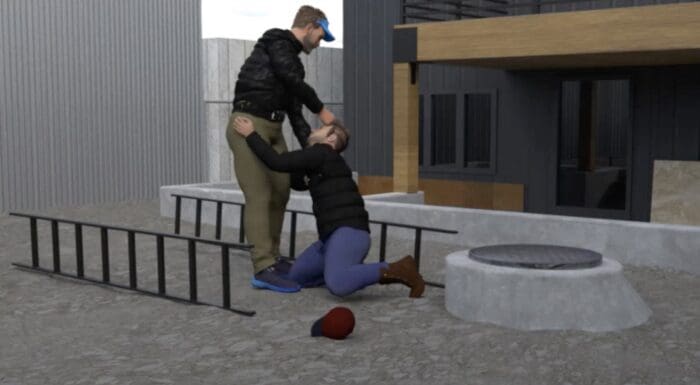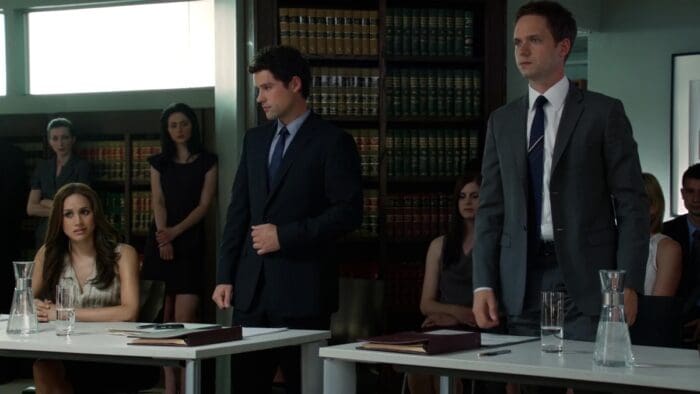Anatomy of a Self-Defense Trial


Even in cases of clear self-defense, lawful firearms owners can find themselves on the wrong end of the legal gun. That’s when their lives depend on a great legal defense team.
Nobody thinks they’re the bad guy. And fortunately, for most of us, we aren’t.
We simply want to go about our lives, make a decent living, eat well, live in a nice home and enjoy quality time with our family and friends. But sometimes, a situation arises, a person or people show up who want to disrupt that harmony, and it forces us to respond, oftentimes on their ugly terms.
Think of a situation where a purse snatcher runs up on a woman who must now struggle to keep her belongings from being stolen or herself harmed, a carjacker who approaches a stopped car with a family inside or something as simple as a disagreement over work or money that escalates to a physical attack. For those people who legally carry a handgun for self-defense, in extreme cases, they can find themselves forced to make that potentially life-altering decision on whether or not to use deadly force to defend themselves. But what’s the alternative? Allow criminals or violent attackers to decide your fate?
That was the situation in which Telluride, Colorado, resident Brian Aitken found himself in November 2021, following an altercation with local contractor Andrew Montalvo. Montalvo allegedly began beating on Aitken, knocking him from his front step to the ground. Aitken, who is physically smaller than his aggressor and was lying injured in his yard as the attack continued, was forced to finally draw the handgun he was legally carrying and fire a single shot that struck Montalvo and immediately ended the attack.
It was then that Aitken’s real ordeal began.
While Aitken felt he was fully justified in his actions and had no other options to stop the violence and possibly save his own life, local law enforcement and the judicial system felt otherwise. Aitken soon found himself facing multiple charges including attempted second-degree murder, first-degree assault with a deadly weapon, second-degree assault with a deadly weapon, second-degree assault causing serious bodily injury and prohibited use of a firearm and reckless endangerment. That was all from firing a single shot in self-defense.
It was the start of a legal nightmare that would grind through the courts for more than two and a half years and cast the specter of a life behind bars upon Aitken, who is married and at the time, had a young son and an eight-month-old daughter. He and his wife Jenna have since had another daughter.
Fortunately for Brian Aitken, he is a member of U.S. LawShield. And that made all the difference.


The Incident
It all began when a home renovation in Telluride went awry. The Aitkens’ flooring contractor, Montalvo, subcontracted the work to an elderly gentleman, which caused a three-month delay. Montalvo then directed the Aitkens to hire another contractor to assist. That November morning, despite paying the full bid amount, less than half the work had been completed and Montalvo demanded a waiver to release him from liability as winter approached. When the Aitkens refused, Montalvo sent text messages stating he intended to keep all the money and quit. He then called Aitken where the brief, heated conversation ended with Aitken instructing Montalvo to have his subcontractor retrieve his tools and for Montalvo to stay away from his house and family.
But Montalvo didn’t listen. He defied Aitken’s request and showed up uninvited, leading to the confrontation.
According to Doug Richards, an Independent Program Attorney for U.S. LawShield in Colorado and Aitken’s defense attorney, the homeowner arrived at his house to meet another contractor, only to be met by the furious flooring contractor. The exchange quickly escalated, and Aitken, standing on his front step repeatedly ordered Montalvo to leave his property. Instead, Montalvo attempted to push past Aitken and enter the house, which lead to the physical confrontation on the steps of the residence. Montalvo attacked Aitken, punching him several times and throwing him to the ground. With his attacker looming over him, injured and fearing for his life, Aitken drew his concealed firearm and shot Montalvo, who later admitted in court to ignoring Aitken’s repeated demands to leave. He even admitted to law enforcement officers that day, as well as to the jury when the case went to court, that he had initiated the attack.

Conflicting Accounts
The contractor claimed that during the fight, he saw Aitken pull out a pistol, prompting him to turn and flee before being shot from behind. A key eyewitness, another contractor at the scene, provided a somewhat corroborative account, observing Aitken standing with his gun in a “low ready” position after the shot was fired. However, crucial forensic evidence was missing – the bullet was never recovered by police – complicating the case further.
Aitken’s defense team led by Richards, after interviewing Aitken and examining the evidence themselves, argued that he had fired the shot while on the ground, aiming upwards at the contractor who was standing over him. This trajectory would explain the missing bullet, which would not have been found on the ground as initially expected. The prosecution’s version suggested a straight or downward trajectory, contradicting Aitken’s description of events.
“The police never found the spent round. They found a shell casing, but they never found the bullet,” says Richards. “The bullet should have been there if this guy was telling the truth.”


Building the Defense
Richards and his team meticulously built Aitken’s defense, bringing in a host of experts to support their case. A forensic pathologist testified that the wound’s trajectory was consistent with an upward shot from the ground. A scene reconstruction expert used advanced photogrammetry techniques to create a 3D rendering of the incident, providing a visual aid to support Aitken’s version of events during the trial. The defense also conducted two intense, life-like mock trials to explore how their arguments would play out before a jury before facing real juries in two different trials.
The first trial, set for July 31, 2023, began under intense local scrutiny. Telluride, a quaint and liberal Colorado town known more for its world-class skiing, scenic views and high-end shops, was already predisposed against Aitken, who had moved to the area from New York. This bias was evident during jury selection, with many potential jurors being dismissed due to their preconceived opinions or connections to the case. Adding to the bias, local law enforcement had made false statements on social media, inaccurately claiming that Aitken had been charged with premeditated attempted murder. These statements were widely parroted across social media and in the news, and despite being incorrect, they have never been corrected and remain public today. Many potential jurors had even experienced a school lockdown that November day triggered by the incident, either as a parent of a student or as a student themselves.
“We did questionnaires prior to jury selection, so the judge sent out questionnaires to the jury,” says Richards. “They summoned three hundred people. One hundred and five showed up, and out of those one hundred and five that did the questionnaires, like twenty-two could have potentially maybe have been put through the jury selection process.”


Judicial Controversies
Compounding the defense’s challenges was a series of judicial controversies as well. The judge in the case had had children at a nearby school that went into lockdown during the incident. Bodycam footage revealed that Judge Keri Yoder had sent her courtroom deputy to the scene and received nonpublic information about the situation, a fact she did not disclose.
Then the judicial aspects of the case took an even stranger turn.
“We subpoenaed a bunch of stuff from the town, and the town attorney swoops in…there’s only a town attorney and an assistant town attorney…but their office moved to quash our subpoena,” says Richards. After all of that, then suddenly, the town attorney recused himself from the litigation, but didn’t say why.
“It turns out the town attorney is married to the judge,” Richards said. The two have different last names so the relationship wasn’t apparent. That was also something the judge had failed to disclose. Armed with this news, Richards argued for a change of venue.
Judicial Recusal and Venue Change
A motion to recuse Judge Yoder was filed, supported by declarations from legal ethics experts, including a former Attorney Regulation Counsel for the Colorado Supreme Court. Initially resistant, Judge Yoder eventually recused herself after the motion and declarations were filed. The case was then assigned to Judge Mary Deganhart, who presided over the pretrial conference.
Judge Deganhart ordered a jury questionnaire to assess whether Aitken could receive a fair trial in Telluride. The overwhelmingly negative responses led to a mistrial and a successful motion to change the venue to Montrose, Colorado, a more firearm-friendly jurisdiction. This move was pivotal, as Montrose residents were less likely to hold an anti-gun bias compared to those in Telluride. They were also less likely to be familiar with the case, so could approach it with a more open mind, a quality crucial to seating a fair jury.
Trials and Defense Strategy
The second trial in Montrose began on January 22, 2024, featuring expert testimonies that supported Aitken’s self-defense claim. A forensic pathologist, a use-of-force expert, a scene reconstruction expert and a firearms expert all corroborated Aitken’s version of events. They demonstrated that Montalvo was likely 36 to 48 inches from Aitken when the shot was fired, and that the shot had an upward trajectory, consistent with Aitken firing from the ground.
After a six-day trial and two days of deliberations, the jury acquitted Aitken of attempted second-degree murder and were reportedly hung, 10-2 in favor of a complete acquittal on three other charges related to the use of a firearm and causing bodily injury. The jury’s confusion over the varying theories presented by the prosecution – ranging from intentional harm to reckless endangerment – played a significant role in the deadlock. In their overzealous attempt to heap charges on Aitken for a single bullet fired in self-defense, they had muddied the waters so badly, the jury couldn’t make sense of it.
“It’s like they presented three totally different theories,” Richards says. “So, the jury was incredibly confused by it. I let them have it in the closing arguments about what a mess their case was.”
In addition to plainly presenting the details of the event, the defense team even used some of the city’s own witnesses to support their arguments.
“We always try to go with the grain on a lot of the evidence,” says Madalia Maaliki, another attorney on the defense team with Richards. As an example, Maaliki noted how the prosecution made a big fuss about the Colorado Bureau of Investigation forensic analyst and what he found, but then never actually put him on the stand.
“All they relied upon for their whole case was eyewitness testimony and cops that had since been fired,” Maaliki says. “We actually put on their expert who did the testing for distance on the gun. To us it was like, why are they hiding from the science? Obviously, it doesn’t support what they want you to believe, and so I think we gained a lot of credibility with the jury calling their witnesses. At the end of the day, the science doesn’t lie.”
Final Resolution
In preparation for a third trial, the prosecution streamlined its strategy, focusing solely on a charge of second-degree assault with a theory of recklessly causing serious bodily injury. This charge still clearly conflicted with Aitken’s self-defense claim, which argued an intentional act of self-preservation. There was nothing reckless about his actions.
However, this change in approach by the prosecution forced the defense team to completely retool their strategy.
“This was like defending a whole new case,” Richards says. It required the defense to completely start over. Trial preparation for this third trial included conducting another mock trial to see how their arguments would play with a jury.
Recognizing the unpredictable nature of jury trials themselves, the prosecution began dangling the possibility of plea offers in front of Aitken. The homeowner and his defense team also recognized Aitken potentially faced a minimum of five years in prison if he were to be convicted as a result of this new theory. In response, his defense team negotiated an excellent and almost “unheard of” plea deal for their client. Aitken entered a no contest plea to Prohibited Use of a Weapon-Discharging a Firearm, a Class 2 misdemeanor, resulting in one year of unsupervised probation. It was an incredible plea deal for Aitken given all that he had been facing, though the terms included forfeiting his firearm, surrendering his expired Pennsylvania Concealed Handgun Permit and agreeing not to seek a new permit during probation.
As typically plays out in criminal prosecutions, one or both parties oftentimes file civil suits as well. Montalvo was no different in that he filed a $5 million suit against Aitken for shooting him. That case was also recently settled for a small sum of money so Aitken couldclose the final chapter of this ordeal. Now, he can finally tell his side of the story.


“It was tough not being able to tell people my side of what happened, but it could’ve been used against me in the trial, so I couldn’t say anything,” Aitken says. “I just want everyone to know my side of the story finally.” In fact, Aitken says at the time of the incident, he offered to provide a statement to police with his lawyer present, but investigators weren’t interested in what he had to say if his attorney was there. To this day, more than three years later, he says, “law enforcement still hasn’t taken a statement from me about what happened that day.”
Aitken and his family moved to England to help grow his online company, Topple, in the United Kingdom and the European Union. Topple is billed as “a free-speech digital advertising platform” for everyone, including the firearms industry. With his exoneration of the primary charges against him and his court matters settled, Aitken and his family are looking to move back to the U.S. to be closer to family and Aitken’s American customers.
Aitken may be a familiar name to some in the gun community. Prior to this trial, Aitken gained fame among the gun crowd in 2009 after he was sentenced in New Jersey to seven years in prison for “illegally” possessing firearms that he actually legally owned and that were locked and unloaded in the trunk of his car while he was in the process of moving from one house to another. Two of the three convictions were later overturned and dismissed by the appellate court, which found the jury should have been informed of federal and state law that allows lawful gun owners to transport firearms while moving. However, the court upheld the conviction for transporting ammunition, as there is no exemption in New Jersey law that allows for the transporting of hollow-point ammunition between one house and another while moving. This “nonsensical” law as Aitken calls it, requires citizens to dispose of their lawfully owned ammunition before moving. New Jersey Governor Chris Christie pardoned Aitken for that charge in 2018 after already commuting his sentence earlier. Aitken wrote a book about that experience called The Blue Tent Sky: How the Left’s War on Guns Cost Me My Son and My Freedom.
Grateful
It was after that original court battle that Aitken met acclaimed firearms attorney, Evan Nappen, who is also an Independent Program Attorney for U.S. LawShield and who Aitken credits as being an incredible attorney. It is from that association that Aitken became a member of U.S. LawShield and learned of its benefits.
“I admit, I never thought I was going to need this,” Aitken says about being a part of the U.S. LawShield family. Even after his first incident. “Now that I have needed it, I don’t know how anyone in a similar situation would be able to defend themselves without it. There’s no way I could’ve afforded the defense I received and avoided prison.”
Aitken goes on to say, “A person shouldn’t have to decide between, ‘Can I afford this or can I save my life?’ The reality is you are treated as if you are guilty, and they will try to prove it until you are bankrupt.”
Despite all that happened, Aitken isn’t sour on life in Telluride. He hopes to return there to live with his wife and children because they love the town and they love skiing. At the time he was first interviewed, he had just returned from a ski trip with his five-year-old son.
“I’m so grateful. I’m sitting here free, and I get to be with my children and my wife every day,” he says, reflecting on what could have been.
“It was a terrifying situation, but I’m generally an optimistic person. I never thought this wasn’t going to work out, especially after I met Doug and Madalia and the team at Richards Carrington who are working with U.S. LawShield. These guys were the best,” he says. “Every day is an absolute blessing. Every day I get to see my kids smiling, it’s really an absolute blessing.”
Read the full article here






